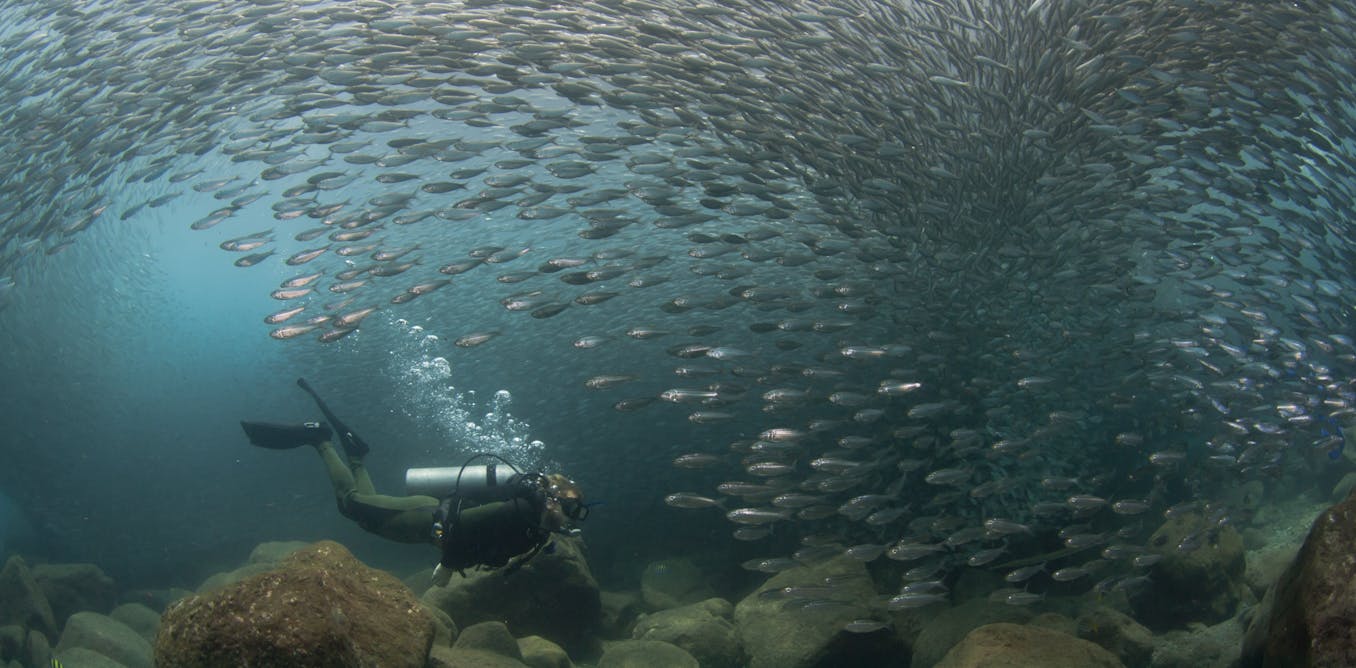
- Select a language for the TTS:
- UK English Female
- UK English Male
- US English Female
- US English Male
- Australian Female
- Australian Male
- Language selected: (auto detect) - EN
Play all audios:
_Changing wildlife: this article is part of a series looking at how key species such as bees, insects and fish respond to environmental change, and what this means for the rest of the
planet._ Just as seasons determine the seeding and harvest times of crops, Earth’s climate dictates the way many animals move, feed and survive. To understand exactly how our changing
climate will impact different animals, it is important for scientists to evaluate the history of populations, how they change over time, and how past climates compare to today. Does a warm
climate mean more of a certain species and less of another, or do numbers of a species only change with the amount of rain or sunshine, for example? Ups and downs in animal populations may
vary every year, or every decade, across small local scales, or large global scales. Understanding the nuances of such patterns is undeniably difficult, especially with regard to our oceans,
which we still know relatively little about. ONE FISH, TWO FISH Northern Sardine (_Sardinops sagax caerulea_) and Northern Anchovy (_Engraulis mordax_) are famous, both for the importance
of their fisheries, and their dramatic population cycles. Over the past 80 years they have become icons of modern-day marine biology, oceanography and climate research. These fish live in
productive waters and support some of the largest fisheries on the planet. Famous for bumper catches and worrying lows, the populations are somewhat unstable and difficult to predict.
Examples of these ups and downs are illustrated by the sardines off the Californian coast. This fishery grew to over half a million tonnes in the later 1930s and early 1940s, but quicker
than this growth occurred, catches rapidly declined in the late 1940s to one-sixth the size of the previous years. This pattern was also mirrored in the Western Pacific off the coast of
Japan. WHAT DRIVES THE CYCLES? Historically, sardine numbers have risen during warm oceanic phases while those of the anchovy have fallen (and vice versa). There may be lots of factors that
drive these cycles: temperature, ocean productivity, competition, natural predation and commercial fishing pressures. The scientific literature, however, concentrates on the idea that
climate and oceanic temperatures determine the cycles of the populations for both species. Neither species interacts with the other (so they’re not competing or eating each other), and
commercial fisheries and natural predation pressures appear to affect only the rate (rather than the size) of changes in population numbers. The question is: why do we need to know when
these peaks and troughs occur? The answer is management. These fisheries support a large wealth of both biological diversity (food for predators) and human economy (fisheries employment and
human food). If we are to successfully manage how much we take from the ocean it is essential that we are able to predict (with some confidence) the impacts of our extractions and the
natural fluctuations from year to year and the ecosystem states in the future. One way fisheries managers predict the cycles of highs and lows in the populations of sardine and anchovy is to
use measures of climate variability. The two most common for climate in the Pacific Ocean are the Pacific Decadal Oscillation (PDO) which cycles over periods of 20-30 years and the El Nino
Southern Oscillation (ENSO) which cycles over periods of 2-7 years. Both have become somewhat standard measures, but in some cases their correlation with fish abundance is still debated.
Although 2015 has been marked as an official El Nino year, (meaning warmer temperatures and surface waters in the Pacific), a longer-term cold cycle is upon the Pacific. Worryingly, this
appears similar to the conditions during the famous sardine collapse of the 1960s. For this reason fisheries managers closed the US west coast sardine fishery at the start of 2015 in an
attempt to ward off the overfishing of a declining stock. This problem has been noted in the Gulf of California in the late 1980s. CAN WE PREDICT THE FUTURE? What does climate change mean
for Pacific sardine and anchovy longer term? It means more unknowns. It means we must be careful in assuming fish will always be there to be caught by humans and eaten by the many other
marine species that rely on them as an important source of food. Correlating populations with climate should be made with caution due to the inter-annual as well as multi-decadal variations
in abundance as well as climatic indices. The variability in sardine and anchovy in particular highlights a key point in resource management and echoes what many marine scientists have
concluded about the anchovy-sardine story: management needs to be flexible and adaptable, based on changes in climate as well as the exploitation efforts of humans and the health of present
stocks. If we do not integrate the natural as well as human-induced drivers of population change we may take too much from a system which is already close to or beyond a breaking point.






